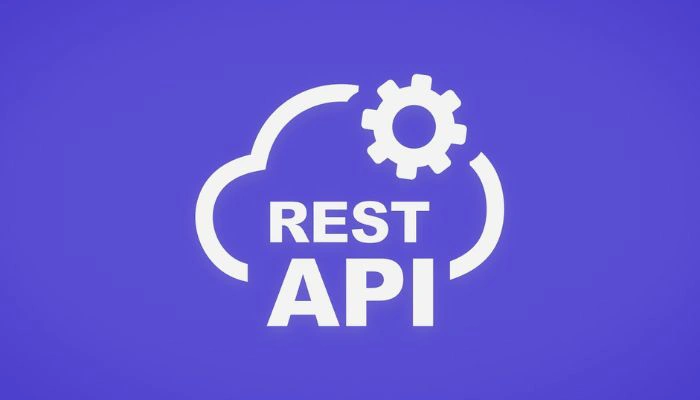How to Reduce IT Costs Through Strategic Outsourcing [Effective Budget]
Information technology (IT) is no longer just a supporting function; it's the very backbone of modern business operations. From enabling seamless communication and data management to driving innovation and customer engagement, IT infrastructure and services are indispensable. However, managing an ever-evolving IT environment comes with a significant price tag. Businesses grapple with escalating hardware and software costs, the recruitment and retention of specialized IT talent, and the constant need for upgrades and maintenance. These financial pressures can strain budgets and divert resources from core business activities, making the optimization of IT expenditure a critical challenge for organizations of all sizes.
The good news is that there’s a proven, effective strategy to navigate these financial complexities: strategic IT outsourcing. By selectively leveraging external expertise and resources, businesses can significantly reduce IT costs through strategic outsourcing while simultaneously enhancing operational efficiency, accessing specialized skills, and focusing more acutely on their primary objectives. This approach moves beyond simply offloading tasks; it involves a thoughtful and deliberate partnership that aligns external IT services with overarching business goals, ensuring long-term value and sustainable savings.
This comprehensive article will delve deep into the world of strategic IT outsourcing, exploring its various facets and demonstrating how it can be a powerful tool for cost reduction. We will unpack the core principles, identify key areas ripe for outsourcing, highlight the myriad benefits beyond just saving money, and provide practical guidance on navigating potential challenges. By the end, you'll have a clear roadmap to implement a successful IT outsourcing strategy that not only cuts expenses but also propels your business forward.
How Strategic Outsourcing Helps to Reduce IT Costs

At its heart, strategic outsourcing is about re-evaluating where and how IT services are delivered to achieve optimal efficiency and cost-effectiveness. It's a fundamental shift from the traditional in-house model, where every IT function, from infrastructure management to software development, is handled by internal staff and resources. While this approach offers direct control, it often comes with substantial overheads, including salaries, benefits, training, hardware procurement, software licensing, and the ongoing maintenance of complex systems.
Understanding the Shift from In-House to External Expertise
The transition to outsourcing allows organizations to transform fixed IT costs into variable ones. Instead of maintaining a large internal IT department with fixed salaries and infrastructure expenses regardless of demand fluctuations, businesses can pay for IT services as needed, scaling up or down based on current requirements. This flexibility is particularly beneficial for projects with finite lifespans or for managing peak workloads without the need for permanent staff expansion. Furthermore, outsourcing provides immediate access to a broader pool of specialized talent that might be too expensive or difficult to recruit internally, especially in niche areas like advanced cybersecurity, cloud architecture, or specific enterprise resource planning (ERP) system implementations.
Cost Savings Beyond Initial Impressions
The immediate savings from outsourcing often come from reduced labor costs due to geographical wage differences or economies of scale achieved by large outsourcing providers. However, the true financial benefits extend far beyond these initial reductions. Outsourcing eliminates the significant capital expenditures associated with purchasing and maintaining IT infrastructure, such as servers, networking equipment, and data centers. It also offloads the ongoing operational expenses related to power consumption, cooling, physical security, and regular hardware upgrades. Moreover, specialized outsourcing firms often have access to discounted software licenses and better deals on IT equipment due to their bulk purchasing power, passing these savings on to their clients. This holistic approach to cost reduction ensures that organizations can genuinely reduce IT costs through strategic outsourcing.
Optimizing Resource Allocation
By entrusting non-core IT functions to external experts, internal IT teams can redirect their focus and resources towards strategic initiatives that directly impact the business's competitive advantage. This could involve developing innovative new products, improving customer experience through technology, or enhancing data analytics capabilities to drive informed decision-making. Instead of spending valuable time on routine maintenance or help desk support, internal staff can concentrate on high-value projects that contribute directly to revenue generation and long-term growth. This optimized resource allocation not only leads to cost efficiencies but also fosters a more strategic and impactful internal IT department.
Identifying Areas for IT Cost Reduction Through Outsourcing

Virtually any IT function can be outsourced, but some areas typically yield more significant cost savings and efficiency gains than others. Identifying the right functions to outsource is crucial for a successful strategy.
- Infrastructure Management (Servers, Networks, Cloud): This is one of the most common and impactful areas for outsourcing. Managing physical servers, network devices, and data centers requires substantial capital investment, ongoing maintenance, and specialized staff. Outsourcing to a managed service provider (MSP) or a cloud provider (e.g., AWS, Azure, Google Cloud) transforms these fixed costs into flexible, consumption-based expenses. Providers handle hardware procurement, patching, monitoring, backups, and disaster recovery, freeing up internal IT teams.
- Software Development and Maintenance: For businesses that aren't primarily software companies, developing and maintaining custom applications can be a significant drain on resources. Outsourcing allows access to a global talent pool of developers, often at competitive rates, for everything from new application development to legacy system modernization and ongoing bug fixes. This flexibility allows businesses to scale development teams up or down based on project needs.
- Help Desk and User Support: Providing 24/7 technical support to employees and customers can be resource-intensive. Outsourcing help desk services to a specialized contact center can reduce labor costs, improve response times, and provide round-the-clock availability, enhancing user satisfaction without overstretching internal IT staff.
- Cybersecurity Services: With the escalating threat landscape, robust cybersecurity is non-negotiable. However, building an in-house team with expertise across all security domains (e.g., threat intelligence, incident response, compliance) is challenging and expensive. Outsourcing to a managed security service provider (MSSP) offers access to cutting-edge tools, round-the-clock monitoring, and expert analysis, often at a fraction of the cost of an internal team.
- Data Management and Analytics: As businesses become more data-driven, the need for robust data management, warehousing, and analytics capabilities grows. Outsourcing data-related tasks, from data entry and cleansing to complex business intelligence reporting, can provide access to specialized tools and expertise, enabling better insights and decision-making without the need for extensive internal investment in data scientists and platforms.
Key Benefits of Strategic IT Outsourcing Beyond Cost Savings

While the primary driver for many businesses to reduce IT costs through strategic outsourcing is financial, the advantages extend far beyond the balance sheet. Strategic outsourcing can fundamentally transform an organization's IT capabilities and overall business agility.
Access to Specialized Expertise: Outsourcing provides immediate access to a vast pool of highly skilled professionals who possess expertise in niche technologies, cybersecurity, cloud platforms, and emerging IT trends. This access can be invaluable for businesses that lack specific in-house skills or need to rapidly deploy new technologies without the lengthy and costly process of recruiting and training.
Increased Scalability and Flexibility: Business needs fluctuate. Strategic outsourcing allows organizations to quickly scale IT resources up or down based on demand, project requirements, or market shifts. This agility ensures that IT infrastructure and support can always align with business objectives, preventing overspending during lean periods and ensuring adequate capacity during growth phases.
Focus on Core Business Activities: By offloading routine or non-core IT functions, internal teams can dedicate their time and talent to strategic initiatives that directly contribute to the company's competitive advantage. This renewed focus enables innovation, improved product development, and enhanced customer experiences, ultimately driving revenue and market share.
Reduced Risk and Enhanced Security: Reputable outsourcing providers invest heavily in cutting-edge security technologies, compliance frameworks, and disaster recovery solutions. They are often better equipped to manage IT risks, including data breaches, system failures, and regulatory non-compliance, than many in-house IT departments, particularly for SMBs. This specialized focus on risk management can provide peace of mind and greater business continuity.
Improved Operational Efficiency: Outsourcing partners often bring optimized processes, best practices, and advanced tools to the table. Their core business is IT service delivery, meaning they are inherently structured to operate efficiently. This can lead to faster service delivery, reduced downtime, and more streamlined IT operations for the client organization.
Navigating the Challenges: Mitigating Risks in IT Outsourcing

While the benefits are compelling, strategic outsourcing is not without its potential pitfalls. Successful implementation requires careful planning and proactive risk mitigation.
Vendor Selection and Due Diligence
Choosing the right outsourcing partner is paramount. This process requires thorough due diligence beyond just comparing price tags. Consider factors such as:
| Criteria | Description |
| Experience & Expertise | Proven track record in your industry and with the specific services required. |
| Financial Stability | Assess their financial health to ensure long-term viability. |
| Security Posture | Robust security protocols, certifications (e.g., ISO 27001, SOC 2). |
| Cultural Fit | Alignment of values and communication styles. |
| Client References | Speak to existing clients to gauge satisfaction and performance. |
| Scalability | Ability to scale services up or down as your needs evolve |
Contract Negotiation and Service Level Agreements (SLAs)
A well-defined contract and comprehensive SLAs are critical. SLAs should clearly define performance metrics (e.g., uptime, response times, resolution times), reporting requirements, dispute resolution mechanisms, and penalties for non-compliance. Clarity here prevents misunderstandings and ensures accountability.
Communication and Collaboration Strategies
Effective communication is the cornerstone of any successful outsourcing relationship. Establish clear communication channels, regular meeting schedules, and define roles and responsibilities for both internal teams and the outsourcing provider. Invest in collaboration tools that facilitate seamless interaction.
Data Security and Compliance Concerns
Transferring data to an external entity raises significant security and compliance concerns. Ensure the outsourcing partner adheres to all relevant industry regulations (e.g., GDPR, HIPAA, PCI DSS) and has robust data encryption, access controls, and incident response plans in place. Conduct regular security audits.
Change Management and Employee Integration
Outsourcing can lead to resistance from internal employees who fear job displacement or changes in their roles. A transparent change management strategy is essential. Communicate the rationale for outsourcing, retrain employees for new roles, and involve them in the transition process to foster acceptance and collaboration.
Implementing a Successful IT Outsourcing Strategy
Executing a successful IT outsourcing strategy involves a structured approach that moves beyond simply finding the cheapest provider.
- Defining Clear Objectives: Before even beginning the search for a vendor, clearly articulate what you aim to achieve through outsourcing. Are you looking primarily to reduce IT costs through strategic outsourcing? Or are there other objectives, such as accessing specialized skills, improving service levels, or focusing on innovation? Clear objectives will guide your vendor selection and contract negotiations.
- Conducting a Thorough Needs Assessment: Analyze your current IT environment comprehensively. Identify which functions are prime candidates for outsourcing based on cost, complexity, internal expertise, and strategic importance. Document current processes, resource utilization, and performance metrics to establish a baseline for comparison.
- Phased Implementation: Rather than attempting a "big bang" approach, consider a phased implementation. Start with smaller, less critical IT functions to gain experience and build trust with your outsourcing partner. This allows for adjustments and fine-tuning before outsourcing more complex or mission-critical operations.
- Continuous Monitoring and Evaluation: The outsourcing relationship is ongoing. Establish key performance indicators (KPIs) aligned with your SLAs and monitor them regularly. Conduct periodic reviews with your outsourcing partner to discuss performance, address any issues, and explore opportunities for further optimization and innovation. This continuous engagement ensures the partnership remains beneficial and aligned with evolving business needs.
Conclusion
In conclusion, strategic IT outsourcing presents a powerful and multifaceted solution for businesses looking to optimize their technology investments and reduce IT costs through strategic outsourcing. By carefully selecting the right partners, meticulously defining scope and expectations, and proactively managing the relationship, organizations can unlock significant financial savings, gain access to world-class expertise, enhance scalability, and refocus internal resources on core business innovation. The journey requires diligent planning and continuous oversight, but the long-term benefits of a streamlined, efficient, and cost-effective IT infrastructure are well worth the effort, positioning businesses for sustained growth and competitive advantage in the digital age.









